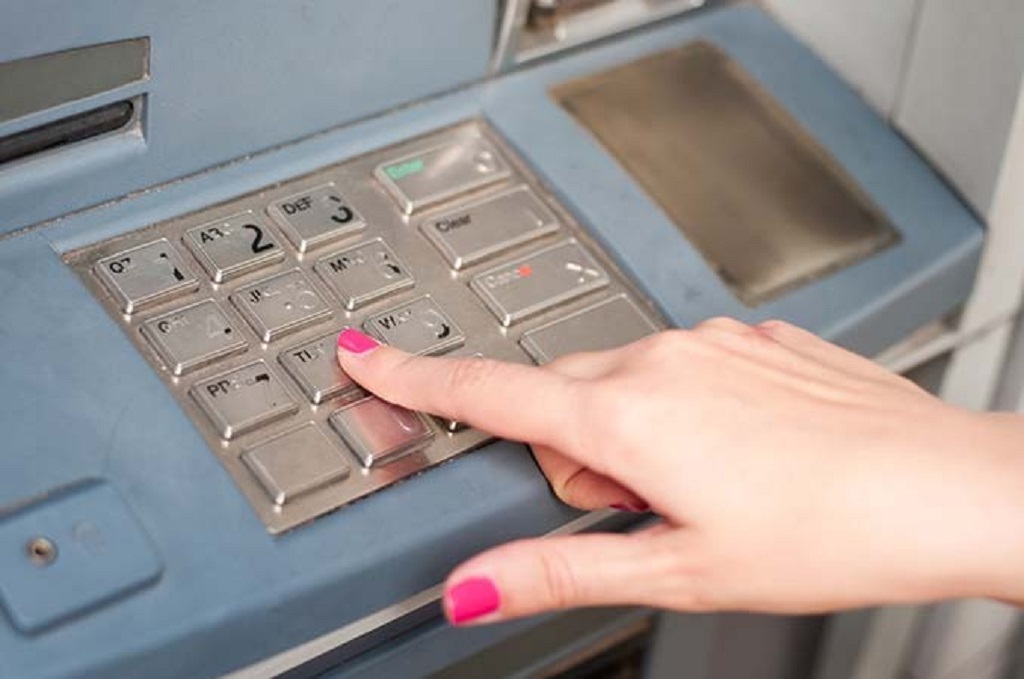Banking transactions can sometimes be confusing, especially when you see unexpected entries on your account statement. One term that often puzzles customers is “adjustment to EF ATM deposit.” This phrase appears on bank statements when financial institutions need to correct or modify previously processed ATM deposits. Understanding these adjustments is crucial for maintaining accurate financial records and avoiding confusion about your account balance. Resources like Tradeizze provide valuable insights into various banking terms and processes that help consumers navigate financial complexities.
When you make a deposit at an ATM, the machine processes your transaction and credits your account. However, sometimes discrepancies occur between the amount you deposited and what the bank’s verification process confirms. Therefore, banks may need to make corrections through what they call an adjustment to ef atm deposit. These adjustments ensure that your account reflects the accurate deposit amount after manual verification or system corrections.
Additionally, these adjustments can work in both directions. Sometimes the bank may increase your deposit amount if their count reveals more money than initially processed. Conversely, they might reduce the credited amount if the actual deposit was less than what the ATM initially recorded. Understanding this process helps you track your finances more effectively and reduces anxiety when you notice these entries on your statement.
What Causes ATM Deposit Adjustments

Several factors can trigger an adjustment to your ATM deposit. The most common reason involves discrepancies between the ATM’s initial count and the bank’s manual verification. ATMs use sophisticated counting mechanisms, but they are not infallible. Sometimes bills stick together, or the machine may misread damaged or wrinkled currency.
Furthermore, deposit envelope issues can lead to adjustments. If you use an envelope-based ATM system, problems can arise if the envelope tears during processing or if items fall out during transport. Additionally, handwriting on deposit slips that is difficult to read may cause initial processing errors that require later correction.
Technical malfunctions also contribute to deposit adjustments. Power outages, network connectivity issues, or software glitches during your transaction can result in incomplete or inaccurate initial processing. Moreover, human error during the verification process, though less common with modern systems, can still occur and necessitate adjustments.
The Bank’s Verification Process
Banks employ multiple verification methods to ensure deposit accuracy. After you complete your ATM transaction, bank personnel typically conduct manual counts of cash deposits within 24 to 48 hours. This verification process involves trained staff who carefully count and verify each deposit against the ATM’s recorded amounts.
However, the verification timeline can vary depending on the bank’s procedures and volume of transactions. Some institutions may take longer during peak periods or holidays. During this verification period, banks may place temporary holds on portions of your deposit until they confirm the exact amount.
Subsequently, if discrepancies emerge during verification, the bank initiates the adjustment process. They will modify your account balance to reflect the verified amount and generate a statement entry explaining the change. Most banks also send notifications about significant adjustments through their preferred communication channels.
Types of EF ATM Deposit Adjustments
Positive adjustments occur when the bank’s verification reveals that you deposited more money than the ATM initially credited to your account. This situation might happen if bills were stuck together during the initial count or if the machine undercounted your deposit due to technical issues.
Conversely, negative adjustments happen when the verified amount is less than what was initially credited. This scenario often results from overestimating the deposit amount due to counting errors, damaged bills that could not be processed, or deposit envelope problems.
Therefore, understanding these adjustment types helps you reconcile your records with bank statements. Keep detailed records of your deposits, including receipts and personal notes about the amounts deposited. This documentation proves invaluable when discussing adjustments with bank representatives.
How to Handle Deposit Adjustments
When you notice an adjustment entry on your statement, the first step is to review your deposit records. Compare the adjusted amount with your personal records and ATM receipts. If the adjustment seems reasonable and matches your expectations, no further action may be necessary.
However, if you believe the adjustment is incorrect, contact your bank immediately. Prepare relevant documentation, including ATM receipts, deposit slips, and any personal records of the transaction. Most banks have dedicated customer service teams trained to handle these inquiries and can research the specific transaction in question.
Additionally, many banks provide online or mobile banking features that allow you to track pending deposits and adjustments in real-time. These tools can help you monitor the verification process and understand when adjustments occur. Some institutions also offer email or text notifications for significant account changes.
Preventing ATM Deposit Issues
Taking preventive measures can reduce the likelihood of deposit adjustments. Always ensure your cash is in good condition before depositing. Straighten wrinkled bills and separate any that might stick together. Count your money carefully before and during the deposit process.
Moreover, use clear, legible handwriting when completing deposit slips. Double-check that the amounts you write match what you are actually depositing. If using envelope deposits, ensure the envelope is properly sealed and labeled according to the bank’s instructions.
Furthermore, keep detailed records of all your deposits. Write down the amount, date, time, and ATM location for each transaction. Take photos of your cash before depositing and retain all receipts. This documentation will be invaluable if questions arise about your deposits later.
Impact on Account Management
Deposit adjustments can affect your account balance and available funds. If you have written checks or made other transactions based on the initial deposit amount, a negative adjustment might cause overdrafts or insufficient fund fees. Therefore, it is wise to wait for deposit verification before relying on the full deposited amount for other transactions.
Additionally, frequent adjustments might indicate underlying issues with your deposit habits or the ATMs you use. If you notice recurring adjustment problems, consider changing your deposit methods or using different ATM locations. Some customers find that teller deposits or mobile check deposits provide more predictable results.
Subsequently, maintaining open communication with your bank about deposit adjustments helps build a better banking relationship. Banks appreciate customers who understand the verification process and work cooperatively to resolve any issues that arise.
Read More Also: Plantable Pencils and Seed Pens
Digital Banking and Modern Solutions
Modern banking technology has significantly reduced the frequency of deposit adjustments. Advanced ATM systems now use improved counting mechanisms and image recognition technology to enhance accuracy. Many newer ATMs provide immediate verification by displaying images of deposited items for customer confirmation.
However, mobile banking apps have also revolutionized deposit processes. Mobile check deposits allow customers to deposit checks by taking photos, eliminating many traditional ATM deposit issues. These systems often provide immediate confirmation and faster processing times.
Therefore, staying informed about your bank’s latest deposit technologies can help you choose the most reliable methods for your transactions. Many banks offer training or informational resources to help customers understand and use these modern tools effectively.
Conclusion
Understanding adjustment to EF ATM deposit entries helps you maintain better control over your finances and reduces confusion when reviewing bank statements. These adjustments are normal parts of the banking verification process, designed to ensure accuracy in your account records. By keeping detailed deposit records, using proper deposit techniques, and maintaining open communication with your bank, you can minimize adjustment-related issues and manage your accounts more effectively. Remember that most adjustments are routine corrections that ultimately benefit account accuracy and customer service.
Frequently Asked Questions
How long does it take for banks to process ATM deposit adjustments?
Most banks complete deposit verifications and any necessary adjustments within 24 to 48 hours of the initial deposit. However, this timeline can extend during weekends, holidays, or periods of high transaction volume.
Will I be notified if my ATM deposit is adjusted?
Many banks provide notifications for deposit adjustments, especially for significant amounts. Notification methods vary by institution and may include email, text messages, or entries in your online banking account.
Can I dispute an ATM deposit adjustment if I disagree with it?
Yes, you can dispute deposit adjustments by contacting your bank’s customer service department. Provide documentation such as ATM receipts and personal records to support your position during the dispute process.
Do deposit adjustments affect my credit score?
Deposit adjustments themselves do not directly impact credit scores. However, if an adjustment causes overdrafts or insufficient fund situations that result in unpaid fees, those issues could potentially affect your banking relationship.
Are there fees associated with ATM deposit adjustments?
Banks typically do not charge fees for deposit adjustments, as they are considered part of normal account maintenance. However, if adjustments cause overdrafts or other account problems, standard banking fees may apply to those situations.
Featured Image
About Author
You may also like
-
These tips will help startups with their accounting
-
User Journey Mapping: Landing to Conversion Map
-
Experts At Planning, Coordinating, And Executing Business-Related Events.
-
Things Quality Control Inspectors Notice That Only PLC Programming Can Manage Effectively
-
New ‘Notary on Demand’ Service Launched

